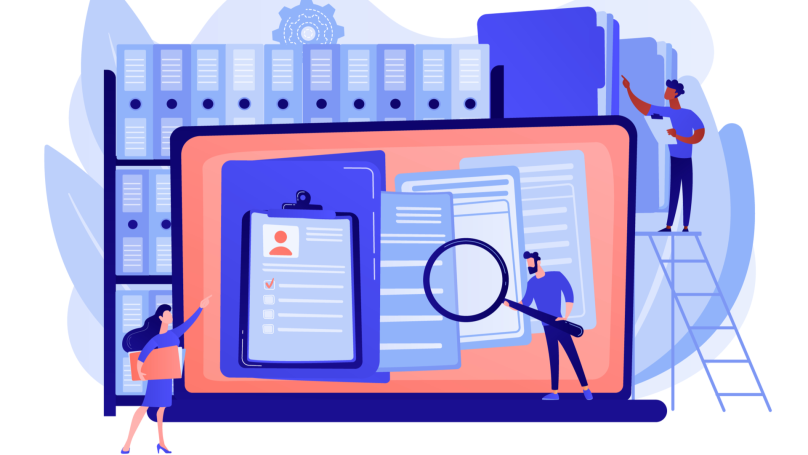Lean Management
What is Lean Management?

Lean management is a method of process management and works organisation aimed at increasing productivity and efficiency of the company, i.e. at improving the profitability of its products and quality. You achieve it by optimising production and business processes, namely by reducing the time required to complete tasks that do not affect the cost of goods (e.g. transportation). It also necessarily improves the conditions in which employees work. The public sector often uses this practice.
The definition of "Lean Management" sees the word 'lean' as no beating around the bush, cutting to the chase, and "no frills." Lean management avoids waste and unnecessary process elements that lead to errors or complicate work and reduce efficiency. The public sector often applies this approach.
The concept of lean management
Lean management is a relatively young and still developing approach based on lean manufacturing, developed by Toyota engineer Taiichi Ono in the 1970s. The idea is to reduce rejects, waste and production losses and solve the country and company's energy crisis. Loss in lean management is a waste of resources that does not add value to the consumer.
Subsequently, the concept has not only spread around the world, but has also been adapted for American companies, hence its name: Lean production, or Lean manufacturing. Furthermore, the concept of lean management has adopted the main task of lean production - the involvement of each employee in the process of optimisation and full focus on the customer.
Thus, the concept of lean management is a more advanced and flexible business strategy, taking elements from its predecessor concepts and adapting them to the needs of today's market.
The principles of lean management

To successfully implement lean management in a company, you need to consider the principles of lean management:
- Find out what creates value in the product for the end customer. Many actions or decisions are ultimately irrelevant to the customer, so you can get rid of them.
- Identify only the most important processes and redirect all the saved resources to optimisation. Then, draw up a scheme to form real value to avoid unnecessary losses. A loss in lean management is a waste of resources that does not increase the cost for the consumer.
- Ensure a continuous production process so that the company's work becomes a "flow". To do this, break down complex tasks into smaller tasks and establish communication between departments so that tasks don't get 'stuck' when moving between them.
- Regulate production based on demand. Only produce the products in the quantities that customers need.
- Strive for perfection by regularly reviewing all business processes and repeating the cycle of Lean principles, eliminating unnecessary costs and improving important ones over and over again.
Lean management tools and techniques
There are a variety of lean management tools, and you should choose them based on your type of business and goals (even if it's the public sector). The most commonly used lean management techniques and tools are as follows:
- Kaizen (meaning a "change for the better") is a Japanese concept of continuous improvement in all aspects of an organisation. That includes the performance of its employees and even their personal qualities.
- Six Sigma is a quality control methodology created by Motorola to detect defects at the production stage.
- JIT (Just in Time) is a concept in which a rigid production schedule governs all flows, materials, components and processes for their use. That makes it possible to do without safety stocks and unnecessary resources.
- 5S is a Japanese system for creating ideal work conditions in production or office to maintain order, cleanliness, and neatness. 5S makes work more effective and saves time without distorting the meaning of lean management.
- Kanban is a management principle, similar to Just-in-Time, which spreads the workload evenly over processes and workers - originally used by IT companies to improve the efficiency of their development teams.
- Andon is visual control management that enables all employees to monitor what is happening in the company and production workflow daily. Andon also alerts the team if a defect or problem occurs with an audible and visual signal.
These lean management tools, like Lean management itself, are used in completely different areas, such as health care, education or even construction. The social sphere is also suitable for the use of Lean. Having a track record of using Lean management of any kind is also very valuable for a portfolio.
Lean Project Management

Lean project management, in simple terms, is the application of lean management principles specifically to project start-up and development. The public sector often applies this. This approach aims to maximise profits while minimising costs and losses. With Lean project management, a company can:
- Create project selection criteria.
- Make deadlines shorter.
- Reduce shipping or storage costs.
- Increase overall team productivity and efficiency.
- Improve product quality.
- Adjust processes.
- Increase customer satisfaction.
The most commonly used method for implementing Lean project management is Kanban (described above) or the Last Planner System, which emphasises collaborative project development with diverse professions in the team, visualising the work and creating a continuous flow. Also, Lean project management is often used together with Lean product management that allows creating a product in super demand with minimal expenses.
Lean Change Management
Lean Change Management (LCM) is both planned and forced adaptive change management. It is most often used in the start-up launch phase because it allows you to implement changes safely, using feedback from participants and statistical data. Public authorities are often using it.
The lean change management model is a non-linear model based on collaboration, like lean project management. From a macro perspective, the model has four stages:
- Strategy formation. Before introducing any change, it is necessary to understand why it is needed and measure its outcome. You also must answer how to help those involved in change adapt quickly to it without loss.
- Prioritisation. The options presented are evaluated and then run as experiments.
- The flexible initiation of change. Phase in the options and have a clear vision of implementing them and rolling them out.
- Gathering feedback. New changes inevitably create a new culture. Monitor the transparency of processes and the overall satisfaction of team members.
Lean management in construction
Lean management in construction, or lean construction, is an innovative area of quality management using lean manufacturing principles to minimise losses in construction projects. This approach is based on systematising the process, structuring the tasks and increasing the responsibility of the performers for the work to which they are assigned. In lean management, continuous improvement is also known as 'Kaizen' (without the use of 'Kaizen', the lean construction methodology is very rarely applied).
Thus, the importance of Lean management in construction is particularly great. Thanks to this approach, construction becomes more efficient, requires less time and resources, and ensures the creation of a high-quality facility meeting all customer requirements.























